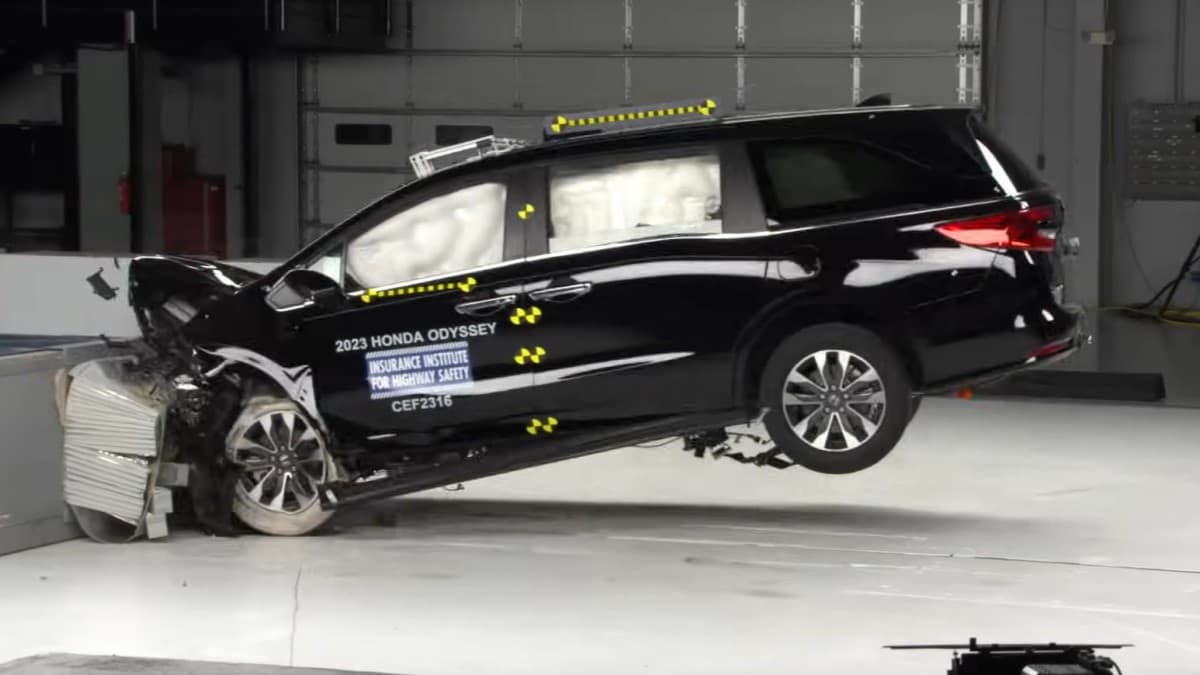One of America’s two major car safety testing organizations performed a new round of tests focused on rear-seat safety in minivans. The results are discouraging.
Every driver wants their rear seat to be safe for passengers. But, in the U.S., minivans are bought almost exclusively as family cars. If you’re shopping for a minivan, we know the people in the back seat are always on your mind.
According to the Insurance Institute for Highway Safety, “minivans ought to boast the safest second-row seating on the market. Instead, they’re lagging behind.”
Related: Car Safety Ratings and How They Work
America’s Two Crash Testing Agencies
Many countries have a safety lab that crash tests cars. America benefits from two.
One is the federal government’s National Highway Traffic Safety Administration (NHTSA). It was not involved in this round of tests.
A group of car insurance companies funds its own safety lab called the Insurance Institute for Highway Safety (IIHS). Insurers have a financial interest in making accidents less deadly. So, the industry uses the IIHS to push the auto industry to develop safer cars.
Related: IIHS Gives Fewer Safety Awards After Toughening Crash Tests
Most in the automotive industry regard the institute’s tests as tougher than government tests. It can easily modify its tests without a lengthy public comment period, and it routinely makes them more challenging.
What’s New? A Child-Size Dummy in the Second Row
This year, it did so by adding a focus on second-row passengers.
The IIHS has long performed a frontal-overlap crash test, which simulates a car hitting another slightly off-center, as often happens in intersections. The institute conducts the test at about 40 mph.
This year, it added a dummy designed to represent a 12-year-old child to the second-row seats.
The IIHS has previously released results of the new tests for small cars, midsize cars, and midsize SUVs. Stunningly, few performed well.
But minivans, with their added bulk and family-centered sales pitch, seemed likely to do better. They did not.
The agency rates vehicles as Good, Acceptable, Marginal, or Poor based on the likelihood of injuries to the driver and, now, second-row passenger. None of the four minivans the institute tested earned a score higher than Marginal.
“It’s disappointing that automakers haven’t acted faster to apply the best available technology to the second row in this vehicle class,” says IIHS President David Harkey.
The Scores
| Vehicle | Overall Rating | Driver Restraints & Kinematics Score | Rear Passenger Restraints & Kinematics Score |
| 2023 Chrysler Pacifica | Marginal | Good | Acceptable |
| 2023 Kia Carnival | Marginal | Good | Acceptable |
| 2023 Toyota Sienna | Marginal | Good | Poor |
| 2023 Honda Odyssey | Poor | Good | Acceptable |
“The restraint systems in all four vehicles leave the second-row occupant vulnerable to chest injuries, either because of excessive belt forces or poor belt-positioning,” said Jessica Jermakian, IIHS vice president of vehicle research. “That’s concerning because those injuries can be life-threatening.”
Automakers already build technologies that could improve the scores. “Of the four vehicles, only the marginal-rated Sienna is equipped with belt pretensioners and force limiters, technologies designed to reduce belt forces,” the IIHS explains. Even in the Sienna, however, the dummy “submarined” beneath the lap belt.
Poor Scores Can Drive Change
The news is depressing, but it has a purpose.
The institute notes that it launched its new test “after research showed that the risk of a fatal injury in newer vehicles is now higher for belted occupants in the second row than those in front. This is not because the second row has become less safe. Rather, the front seat has become safer because of improved airbags and advanced seat belts that are rarely available in back.”
The Rear Seat Is Still the Safest Place for Children
Don’t think, the IIHS cautions, that kids are safer in the front. “Even with these developments, the back seat remains the safest place for children, who can be injured by an inflating front airbag.” Since the test represented a 12-year-old, it does not apply to small children in child safety seats.








